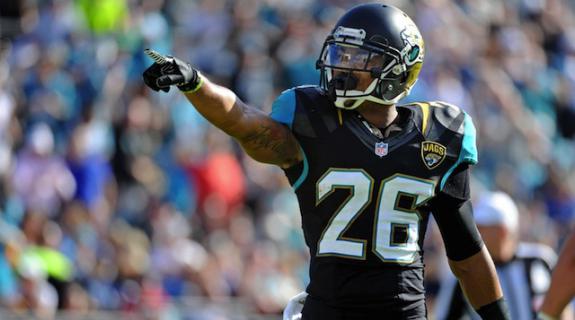As live sports have increasingly become broadcast television’s biggest revenue driver, sports telecasts have become increasingly sophisticated, which puts sports teams in a bit of a quandary. It’s great that people can watch games with better quality than ever before in the comfort of their own living room, but today’s fans have also been trained by their televisions to have expectations that live-sports facilities are in a constant struggle to meet.
“The number-one thing that fans want [at a game],” said Steve Ziff, VP of marketing and digital media for the NFL’s Jacksonville Jaguars, “is, after you see a big play or a play that is controversial, people look to the video board and the operator behind the board to help them understand what just happened and to see it again. Replay has become the number-one biggest desire of a fan when they’re at a football game or sporting event because it’s what we get at home, on television.”
Many sports fans spoiled by television have endured the frustrating stadium experience of wanting to see a play again on the JumboTron or other massive-screen apparatus, only to have it never materialize. Or only to see it once or twice and then it’s gone forever. Or to have a terrible angle from your seat where you can hardly see the screen at all. In terms of mitigating this issue and enhancing the live-game experience, the Jaguars have been unequivocal leaders in the NFL and professional sports in general. The team dropped $63 million in 2014 to build the world’s largest HD LED video boards at its home stadium EverBank Field – a pair of towering 62-by-362-foot behemoths perched above either end zone that project replays, highlights and other game-related content across a cumulative 22,000 square feet of screen real estate. And this year, the Jags had been looking to add a virtual reality element to the experience, a functionality already found on television “where you can stop play, swivel the replay around, find the ball, that kind of thing,” said Ziff. “We wanted to be able to create that 3D replay where we could pan all around and do a full 360.”
It soon became apparent, however, that broadcasting instantaneous 360-degree replays on the world’s biggest screens is tricky.
“You have to move at light speed to be able to pull replays in quickly,” said Ziff, “because you’re moving on the live-game action.” So with the original large-scale VR execution still on the back-burner, the Jags and their visionary technology partners Voke VR turned their attention toward another available screen with greater flexibility: the mobile device.
“On a mobile device a fan can do what they want, when they want,” said Ziff, “so it doesn’t have to be there in a second and gone in the next. It can live there during the game experience. That is the difference between the first screen in the stadium, which is the scoreboard, and the second screen, which is the mobile device.”
The new Jaguars Gameday app, which is now available on both iTunes and Android stores, takes full advantage of the malleability of mobile devices, pulling from four different panoramic cameras to pipe every single play into the phones and tablets of fans who are at the stadium. Each replay appears in the feed two to three seconds after its origin plays has ended, and all plays are fair game, including kick-off, special teams plays and penalties. Users can access any play they wish during the game, and peruse it at their leisure and as many times as they want to. And on a mobile device, where swiping and pulling are the norm, the VR component becomes interactive, letting fans control which angle they view the play from, rewind, fast forward and slow things down, and even tilt, pan and zoom in or out from the footage.
Currently, this innovative VR technology is limited to the 2D space and Ziff said it will probably stay that way for the foreseeable future, if only because “we’ve invested 60 million dollars in building the biggest scoreboards in the world and we don’t want everyone with their head in the cardboard.” But the perpetually forward-thinking Jaguars, with Voke’s help, are finding other ways to implement VR into their proceedings, including headset-based viewing immersions for club and season ticket holders. And when the team played at Wembley Stadium in London earlier this season, fans outside on Regent Street could engage with an Oculus Rift VR tour that featured one of the Jags’ cheerleaders guiding them around EverBank Field back in Jacksonville.
Finding a balance between future VR executions and fans’ real-world experience at ive games will be top of mind going forward, said Ziff: “We’ve got such incredible technology in the stadium and we need to further enhance the moments that fans want… Everyone has a shorter attention span now towards everything and because the moments are so quick, you have to capture attention in a different way and balance people between your technology opportunities.”
Tags:













































__twocolumncontent.jpg)











